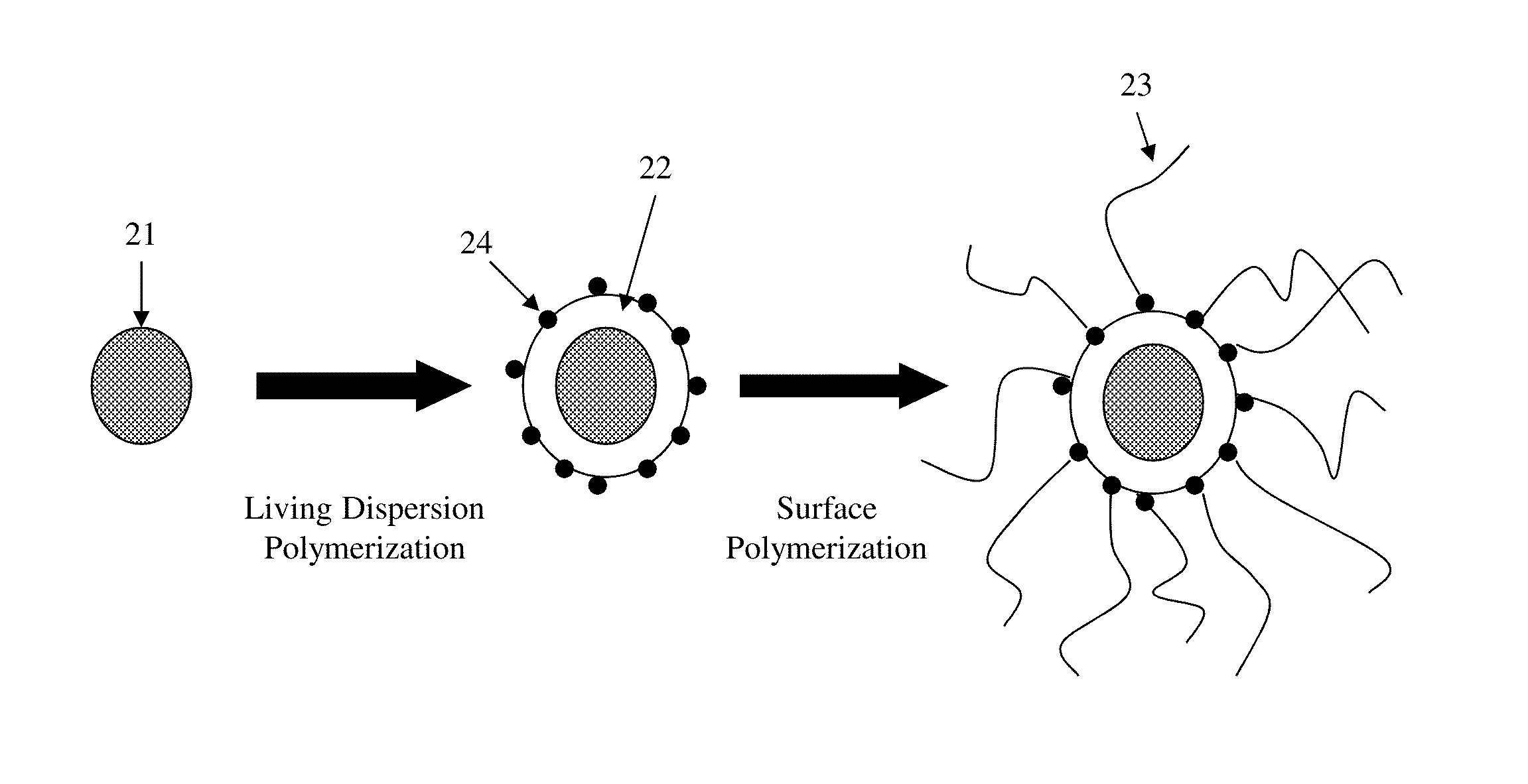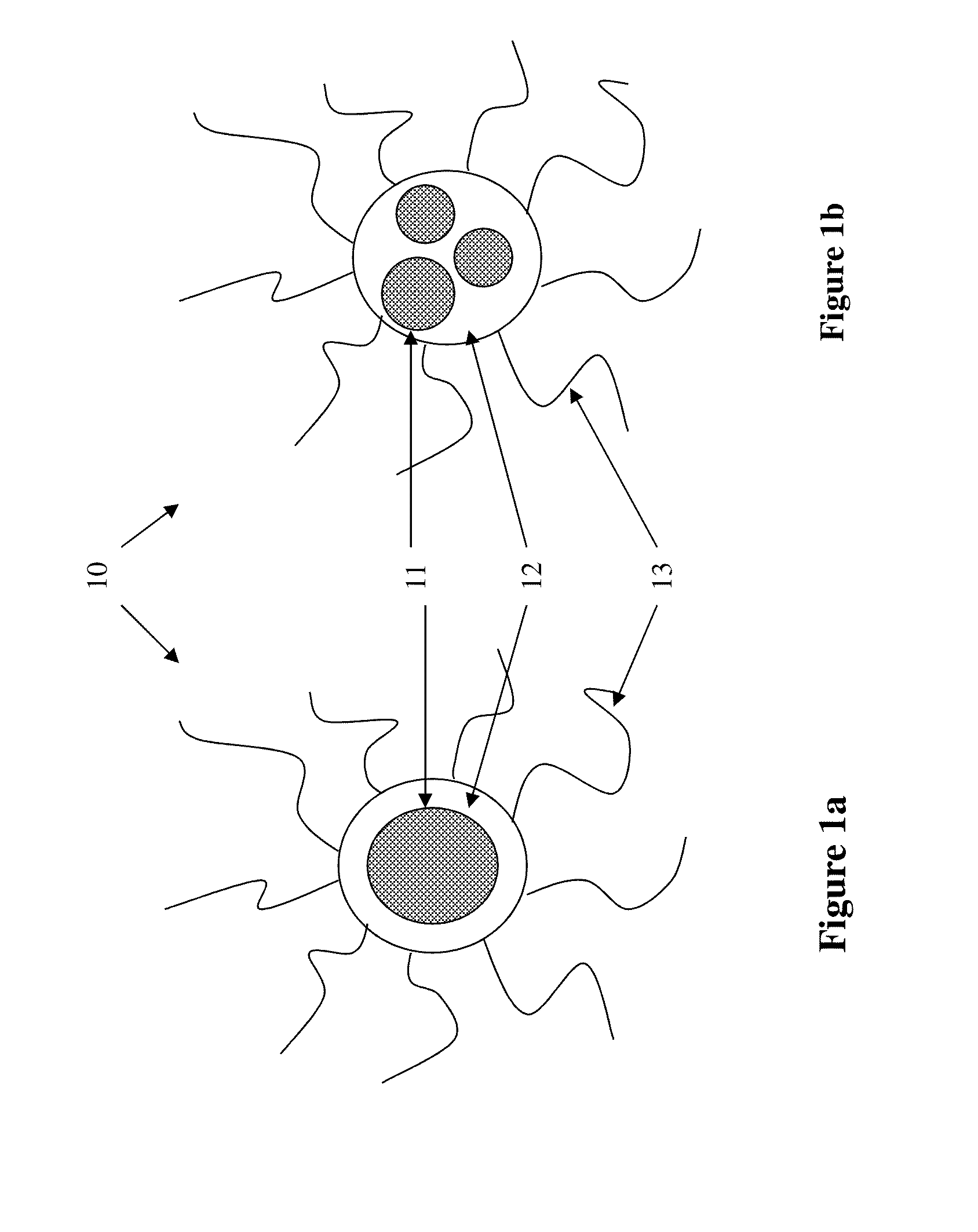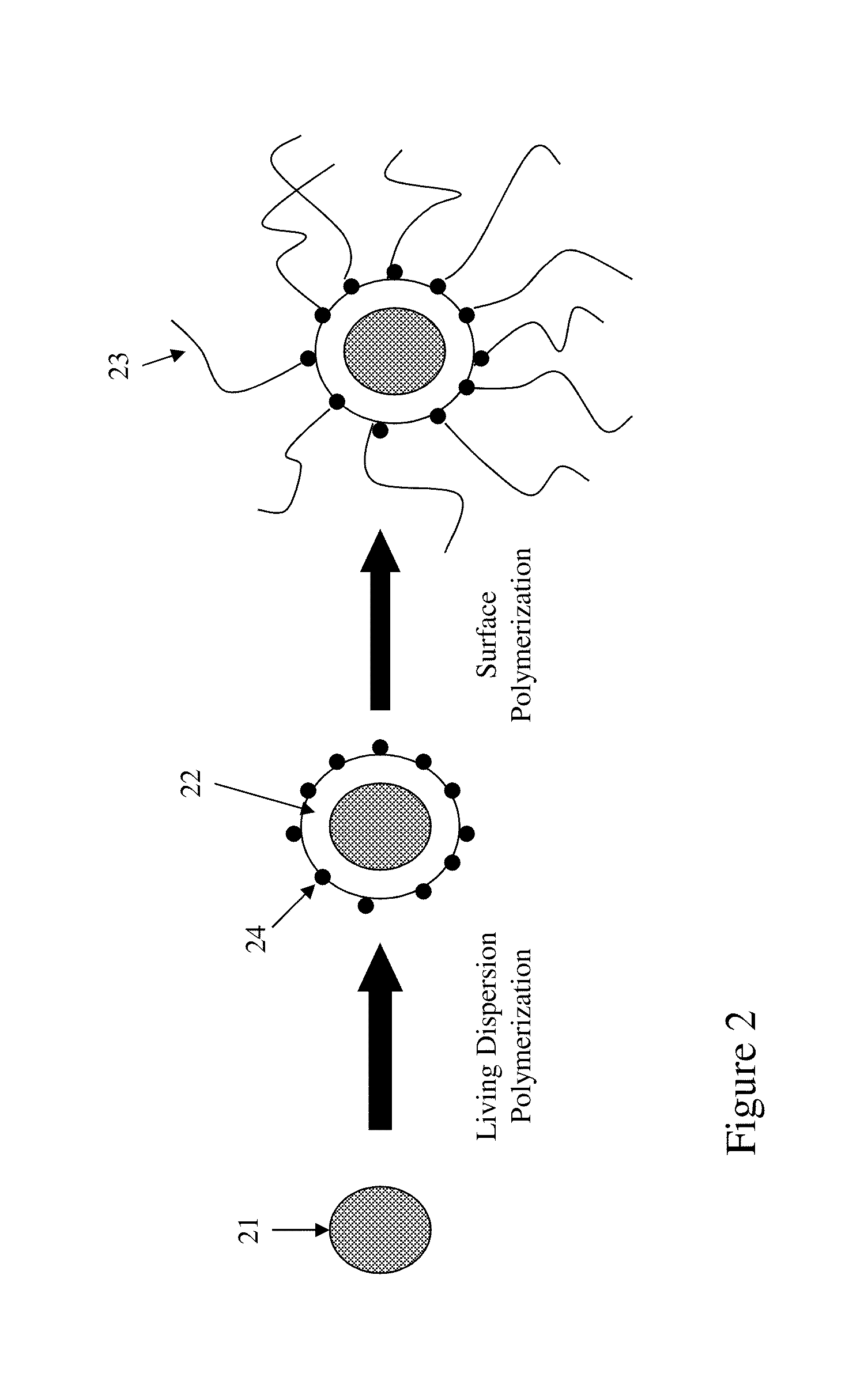Electrophoretic fluid
a technology of electrophoretic fluid and ectrophoretic fluid, applied in the field of electrophoretic fluid, can solve the problems of poor grey level bistability and vertical settling problems
- Summary
- Abstract
- Description
- Claims
- Application Information
AI Technical Summary
Benefits of technology
Problems solved by technology
Method used
Image
Examples
example 1
Step A: Deposition of Vinylbenzylaminoethylaminopropyl-trimethoxysilane on Black Pigment Particles
[0089]To a 1 L reactor, Black 444 (Shepherd, 40 g), isopropanol (320 g), DI water (12 g), ammonium hydroxide (28%, 0.4 g) and Z-6032 (Dow Corning, 16 g, 40% in methanol) were added. The reactor was heated to 65° C. with mechanical stirring in a sonication bath. After 5 hours, the mixture was centrifuged at 6000 rpm for 10 minutes. The solids were redispersed in isopropanol (300 g), centrifuged and dried at 50° C. under vacuum overnight to produce 38 g of desired pigment particles.
Step B: Preparation of Polymer Coating on Pigment Particles Through Dispersion Polymerization
[0090]Two (2) g of polyvinylpyrrolidone (PVP K30) was dissolved in a mixture of 94.5 g water and 5.5 g ethanol. The solution was purged with nitrogen for 20 minutes and heated to 65° C. The pigment particles (4 g) prepared from Step A was dispersed in a mixture of 3.0 g lauryl acrylate, 0.2 g divinylbezene and 0.03 g AI...
example 2
Synthesis of Colored Composite Pigment Particles
[0093]Hostaperm Red D3G 70-EDS (Clariant, 2.5 g), methyl methacrylate (8 g) and toluene (2 g) were added into a 20 ml vial and sonicated for 2 hours. To a 250 mL reactor, the above mixture, MCR-M22 (Gelest, 5.7 g) and DMS-T01 (Gelest, 30 g) were added. The reactor was heated to 70° C. with magnetic stirring and purged with nitrogen for 20 minutes, followed by the addition of lauroyl peroxide (0.07 g). After 19 hours, the mixture was centrifuged at 5000 rpm for 15 minutes. The solids produced were redispersed in hexane and centrifuged. This cycle was repeated twice and the solids were dried at room temperature under vacuum to produce the final particles. The polymer content of the particles produced was about 49% by weight, tested through TGA (thermal gravimetric analysis).
PUM
| Property | Measurement | Unit |
|---|---|---|
| Fraction | aaaaa | aaaaa |
| Fraction | aaaaa | aaaaa |
| Molar ratio | aaaaa | aaaaa |
Abstract
Description
Claims
Application Information
 Login to View More
Login to View More - R&D
- Intellectual Property
- Life Sciences
- Materials
- Tech Scout
- Unparalleled Data Quality
- Higher Quality Content
- 60% Fewer Hallucinations
Browse by: Latest US Patents, China's latest patents, Technical Efficacy Thesaurus, Application Domain, Technology Topic, Popular Technical Reports.
© 2025 PatSnap. All rights reserved.Legal|Privacy policy|Modern Slavery Act Transparency Statement|Sitemap|About US| Contact US: help@patsnap.com



